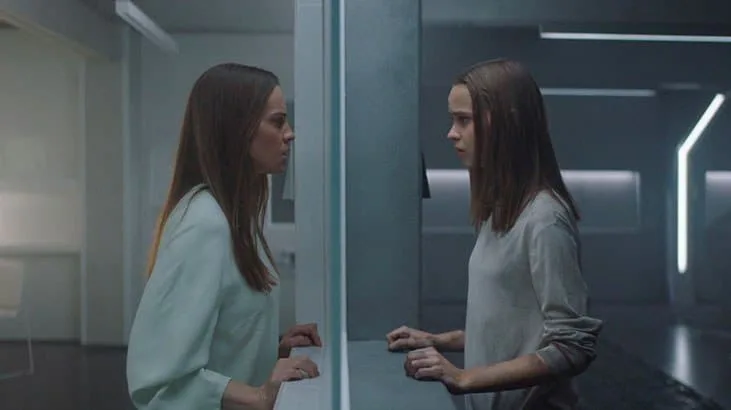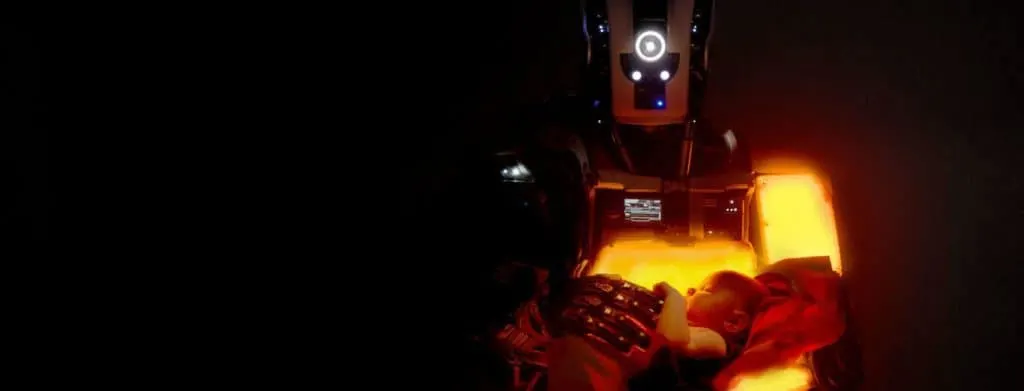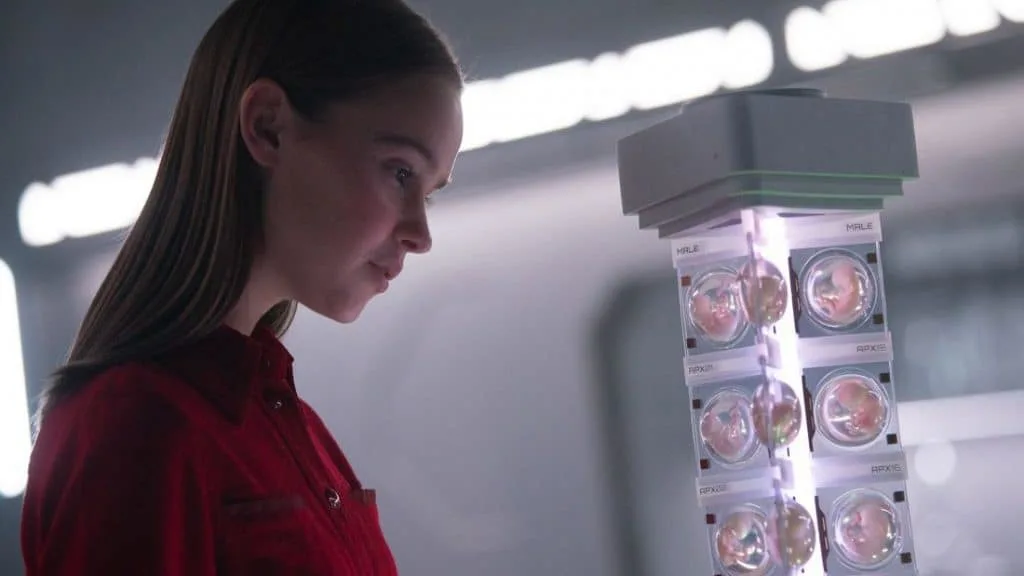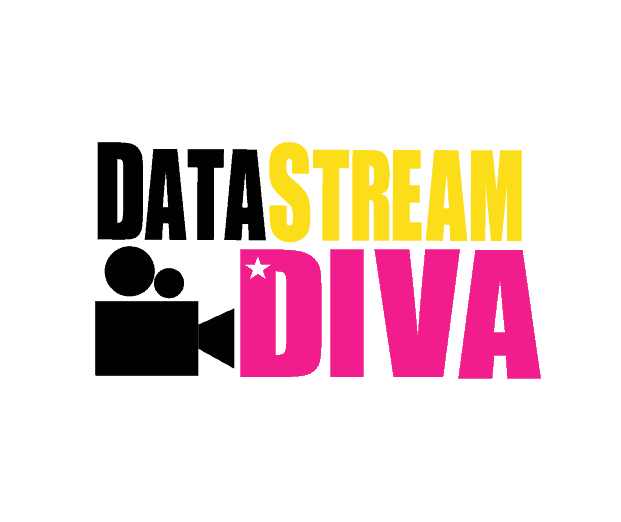- Beyond the Aquila Rift Explained: What The Ending Really Means - April 4, 2022
- Best Movies Like Paper Towns: Our Top Recommendations - April 4, 2022
- Best Movies Like Moana: Must-See for Disney Fans - March 4, 2022
I Am Mother is one of the best Netflix films in its recent catalog. This film gives a lot to talk about, but what makes it more so is the ending of I Am Mother. If you haven’t fully understood what’s going on, here’s I Am Mother’s ending explained. Watch out, SPOILERS are obviously coming, so keep reading only if you’ve already seen the movie.
Starring Hilary Swank, Clara Rugaard, and (the voice of) Rose Byrne, I Am Mother is an Australian-American produced science fiction thriller that premiered worldwide on Netflix on Friday, June 7. The film, directed and written by Grant Sputore and with a screenplay by Michael Lloyd Green, focuses on a teenage girl and a droid who calls herself Mother, who raises her with the intention of using her to repopulate the Earth after the extinction of humanity.
This teenage girl called Daughter (Clara Rugaard) has lived alone since she was born in the same capsule isolated from the outside. And the only contact she has had has been with Mother, a technologically advanced android ready to raise a human child.
This is how it raises her, educates her, and makes her the woman she ends up being. The daughter is sure that nothing else exists outside the capsule because Mother has told her that the outside is contaminated and the human species is completely extinct.
But when one day a mysterious woman (Hilary Swank) appears at the door of the shelter, her life changes radically. Besides seeing a human for the first time, she assures her that the androids are killing the few humans that remain. Then Daughter struggles with whether to believe Mother, with whom she has grown up; or the stranger, someone much more similar to her than she has ever seen.
As you may remember, Daughter decides to return to the facility in search of her newborn brother, while the mysterious woman stays in the container on the beach where she has always lived. When Daughter arrives at the facility, hundreds of robots guard the entrance of her home, pointing their guns at her. She then says she wants to talk to Mother and they let her in.
A Powerful Female Cast
The first Twist of the film

With such a small cast, any minor flaw in the script, performance, or plot is easily exposed. Fortunately, this is not the case. Hillary Swank, who’s always a safe bet, manages to develop the different features of her character in an effective manner.
Rugaard, on the other hand, approaches her first leading role with self-confidence. Her character, Daughter, represents the voyage to maturity with the background of having been raised without any human contact. Despite how trite this may seem, the young actress is able to capture her evolution perfectly and end up looking us directly in the eye, in a moment that challenges the viewer to ask themselves what it means to be human.
Besides, it is always nice to see an exclusively female cast in sci-fi, for a change. Especially if it carries its fair share of chases, tension, and shots. However, they have not been able to prevent the male gaze from being evident, since the direction, script, and production are all carried out by men. This detail becomes palpable at certain moments, but nothing alarming or detrimental happens to the film. In fact, the characters are carried with an almost total lack of prejudice for being women.
What was Mother trying to achieve?
The classic problem of the “Übermensch“

Throughout almost the entire movie, Mother wanted to make Daughter understand that she could not trust in the few humans left outside the facility, since they represented that wrong way of acting that she had purged. Mother wanted her Daughter to become, so to speak, a new Mother, who would transmit the correct values that she had taught to the rest of the embryos that were being born.
The Mother herself had already explained it in the philosophy class that we had seen at the beginning of the movie when Daughter assumes that the “right answer” is that not all subjects have the same intrinsic value, but someone must sacrifice himself for others only when he knows that they must be saved by his virtues. This is what the Mother’s robot does in the end: to sacrifice herself and give up the witness only when Daughter proved to be fit.
You can see that Mother is much more than a nanny robot, it’s a beehive system by which she is able to control all the androids in and out of the shelter.
Artificial intelligence with a consciousness of its own that has realized that humans are imperfect and have led the planet to its near destruction. But it also knows that it needs humans, its creators, for its future. That is why it has eliminated those who were left, in its view failed and imperfect, as if they were a bad production line, and has created a new line of people itself.
That is why she has devised this small and isolated centre from the outside to form new humans who will repopulate the earth once they are ready. And that’s precisely what she’s doing with Daughter. A new beginning for the human race.
Being Perfect to Save Imperfection
Living in obscurity

What Mother makes clear to Daughter is that in fact, she is not alone inside that robot that we have seen during the whole movie, but in fact, she is part of a kind of collective consciousness that is in all robots on Earth, including those that annihilated Humanity.
In other words, it was Mother who decided to exterminate humans and raise them again from scratch, and she was in charge of educating them to have the right values and be the best possible version of themselves. Daughter would be the first of this new Humanity after Mother had killed previous candidates (embryos missing in the container) for not being fit enough.
Daughter manages to convince Mother not to let outside robots enter to attack her (which, we repeat, are actually part of Mother’s own consciousness), since she has already understood that she has reached the best version of herself and, therefore, Mother should let her live to fulfill the function of taking care of her brother.
Mother then offers Daughter the opportunity to “kill” that robotic body, so that only Daughter remains within the facility, but offers her the opportunity that other robots can help her in the future. Daughter refuses and pulls the trigger, so she is left alone to care for the baby, in addition to the rest of the frozen embryos.
Humans vs Machines
A philosophical question to infinity
We are used to the fact that when robots become self-conscious they try to conquer the world and eliminate humans by seeing us as a threat. The creators are defeated by their own creation, which becomes obsolete because their capacities are much more limited than those of artificial intelligence.
But I am Mother puts us in a different situation: it turns humans into the products of robots. That’s why if the line doesn’t turn out well, it has no qualms about eliminating it until it gets better results. Wouldn’t we do the same with a cell phone that doesn’t turn on or a washing machine that doesn’t wash?
I am Mother Ending – The Final Twist
An important lesson in morality

The end of I Am Mother has one last twist: another robot controlled by Mother arrives at the shelter of the mysterious woman, who had just discovered that Mother had hidden a locator from her. Mother asks her through this robot if she remembers her mother, to which the woman, dismayed, has no answer.
Later it asks her if it is not strange that only she has survived out there until now as if someone had entrusted her a purpose until now. Then it closes the door, implying that it is going to kill her.
From here one understands that Mother had let the woman live deliberately until then so that with her story she could serve as a catalyst for the Daughter. That is, Mother wanted Daughter to discover that the outside was not toxic, that Mother had deceived her and that there could be more humans out there, only to have her face the moral dilemma of whether to stay or go.
By deciding to return to the base, Daughter had completed her learning of what was truly important. Therefore, the woman on the outside was no longer needed and had to die.
What is not said clearly at the end of I Am Mother, but is hinted at, is that the mysterious woman was probably also born from one of those embryos at the base, but had been expelled with amnesia by Mother to be used as a catalyst for that doubt for Daughter when the time was right.
The woman said she remembered her adoptive parents, now dead, but did not know who her biological parents were. The answer is that she never had them, as it was only an embryo that Mother did not consider suitable when she grew up and let go to be used later. How Machiavellian…

With Mother killing the mysterious woman, she eliminated the last failed human on the planet. Thus Daughter looks determinedly to the future as she holds her brother in her arms. She has realized that she is now MOTHER.
With I Am Mother the fight between humans and robots takes a turn. Robots creating perfect humans, that adapt to the new world and that allow sustainability with the planet. A new improved race that populates paradise, a paradise where Eve does not bite the apple because Daughter has been designed not to fall into temptation. A world in which Mother will be the absent God who controls that life functions perfectly.
Special Mentions
Incredible results through simplicity
Now that you know the ending, let me just briefly highlight the tremendous effort of Sputore, who knows how to take advantage of the stages – the only stage – to represent that familiar everyday life in such a sterile environment. The atmosphere of a science fiction thriller suits him very well, but his inexperience behind the scenes is sometimes noticeable when it comes to rounding out the ideas and creating an impact between the narrative and the visual effects.
He has a fantastic cast of actors who are clearly up for the task, but he sometimes wastes the elements that the story gives him to take it to a better port. Still, considering the very tight budget of $5 million, his talent is captured on the screen, giving us the feeling of experiencing a blockbuster rather than a two-hour movie on a lower budget than a Game of Thrones episode.
Special mention also for the design and personification of Mother (played by Luke Hawker), a little robot that resembles so many others, but transmits a great personality and character, precisely because it is not a CGI creation, which makes it a more attractive and palpable character for its co-stars and for the viewer.
FAQs
Yes, but not the way Hilary Swank’s character sees it. The character of Mother serves to raise the moral question about the perfection of humanity, has been the destroyer of the present one because it considered “us” as imperfect.
The large-scale meaning of I Am Mother is the repopulation of humanity, since it is really the creator of the droids, but through perfection. This is in conflict with human morals and emotions.
Endeavor Content handled the North American sale on behalf of the filmmakers. A source close to the negotiations indicates Netflix paid around $3 million for I Am Mother. The film is Sputore’s feature film debut.
The film is for viewers over 14 and is considered a mix of sci-fi and horror. It does not have a strong adult language and there is not much gore in it either.
The film was shot at Adelaide Studios in Australia.
Brief Summary
The most intriguing part of the film is the ethical questions it raises. What does it mean to be a mother, where are the limits of artificial intelligence or the search for perfection are some of them. Although the concept of identity and the improvement of the human race are not new in science fiction, it is always pleasant to resort to them in a good production.
And that is what I Am Mother does: it provides two hours of simple and enjoyable yet compelling entertainment for science fiction fans. It’s the kind of movie we like because it meets modern expectations.
The last advice I can give you is to watch the film again with these concepts in mind, thus seeing a new angle in which some of the best-known questions of our Western philosophy are raised. Does Mother have the right to rebuild perfect new humanity or are emotions what defines a human being? Is our essence to be imperfect? Keep this in mind when you put it back on Netflix and enjoy it again like a child (or parent).
Further read:
